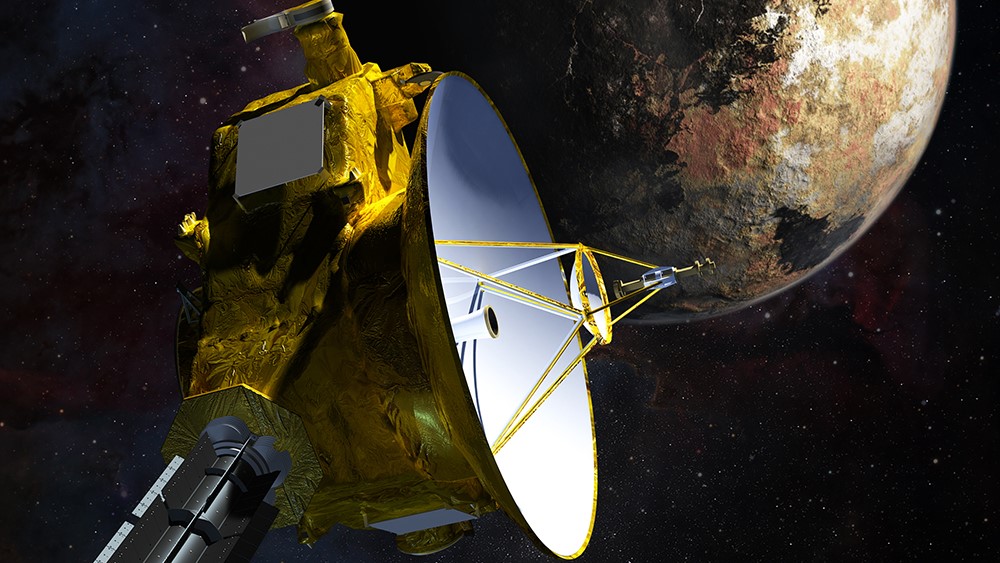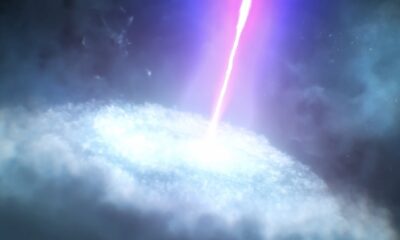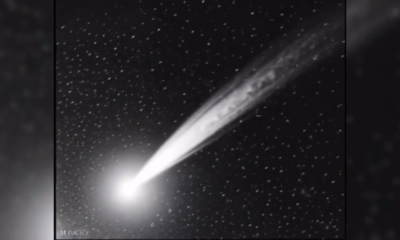Science
NASA’s New Horizons Demonstrates Innovative Star Navigation Method

NASA’s New Horizons spacecraft has successfully showcased a novel method of interstellar navigation by utilizing the light from just two stars to determine its location and trajectory. This groundbreaking technique was developed by an international team of researchers and marks a significant advancement for future missions exploring the farthest reaches of our solar system and potentially beyond.
On April 23, 2020, New Horizons imaged the star-fields containing Proxima Centauri and Wolf 359, two of the nearest stars to Earth, while astronomers conducted similar observations from our planet. At that time, New Horizons was approximately 47.1 astronomical units (AU), or around seven billion kilometers, from Earth, as measured by NASA’s Deep Space Network. This distance was crucial for demonstrating the concept of parallax, where observations from two different vantage points allow for precise measurements of celestial positions.
The team, led by Tod Lauer from NOIRLab, focused on these two stars due to their proximity—Proxima Centauri is just 4.2 light-years away, while Wolf 359 is located 7.9 light-years from Earth. The difference in perspective from New Horizons and Earth enabled the researchers to observe these stars in slightly different positions relative to the background stars, resulting in a measurable parallax angle. The observations indicated a parallax angle of 32.4 arcseconds for Proxima Centauri and 15.7 arcseconds for Wolf 359.
To calculate New Horizons’ position using these measurements, the team applied basic trigonometry, leveraging the known distances to the stars. Although the project was more a proof-of-concept than a definitive navigation solution, it highlighted the feasibility of using this method for future spacecraft.
The COVID-19 pandemic presented challenges for the team in executing their observations. Edward Gomez from the UK’s Cardiff University shared his experience in coordinating these efforts. “Tod Lauer contacted me saying that these two observations were going to be made, and was there any possibility that I could take them with the Las Cumbres telescope network?” Gomez reflected. Ultimately, he was able to capture images of Proxima Centauri from the Las Cumbres telescope at Siding Spring in Australia, while Wolf 359 was observed by the University of Louisville’s Manner Telescope at Mount Lemmon Observatory in Arizona.
The analysis of these observations utilized a 3D model of the stellar neighbourhood, based on data from the European Space Agency’s Gaia mission. Despite the limitations in precision—New Horizons’ position was calculated to within 0.27 AU and its heading to an accuracy of 0.4 degrees—the research team found value in the results. Gomez noted, “The good thing about this method is just having two close stars as our reference stars. The handed-down wisdom normally is that you need loads and loads [of stars], but actually you just need two and that’s enough to triangulate your position.”
While more sophisticated navigation methods, such as pulsar measurements, exist, they often require larger and more complex equipment. Current techniques have been successfully demonstrated on the International Space Station in low-Earth orbit, but this is the first instance of interstellar navigation being attempted for a spacecraft located far from Earth.
As of now, New Horizons continues its journey, having cleared the Kuiper Belt and currently situated at 61 AU from Earth. Looking ahead, Gomez expressed hope for future parallax measurements under better conditions. “I hope so. Now that we’ve written a paper in The Astronomical Journal that’s getting some interest, hopefully we can reproduce it, but nothing has been planned so far.”
This innovative navigation technique not only illustrates the potential for future interstellar missions but also brings a sense of nostalgia for Gomez, who reminisced about his early interests in mathematics and space exploration. “When I was doing [high school] mathematics more years ago than I care to remember, I was a massive Star Trek fan and I did a three-dimensional interstellar navigation system as my mathematics project!” Now, he finds himself as part of a team using the stars to guide humanity’s exploratory emissaries into the cosmos.
-

 World2 days ago
World2 days agoCoronation Street’s Shocking Murder Twist Reveals Family Secrets
-

 Entertainment4 months ago
Entertainment4 months agoKate Garraway Sells £2 Million Home Amid Financial Struggles
-

 Entertainment3 months ago
Entertainment3 months agoAnn Ming Reflects on ITV’s ‘I Fought the Law’ Drama
-

 Health3 months ago
Health3 months agoKatie Price Faces New Health Concerns After Cancer Symptoms Resurface
-

 Entertainment3 weeks ago
Entertainment3 weeks agoCoronation Street Fans React as Todd Faces Heartbreaking Choice
-

 World3 weeks ago
World3 weeks agoBailey Announces Heartbreaking Split from Rebecca After Reunion
-

 Entertainment5 days ago
Entertainment5 days agoTwo Stars Evicted from I’m A Celebrity Just Days Before Finale
-

 World5 days ago
World5 days agoKevin Sinfield Exceeds Fundraising Goal Ahead of Final Marathons
-

 Entertainment3 months ago
Entertainment3 months agoCoronation Street’s Carl Webster Faces Trouble with New Affairs
-

 Entertainment3 months ago
Entertainment3 months agoWhere is Tinder Swindler Simon Leviev? Latest Updates Revealed
-

 Entertainment4 months ago
Entertainment4 months agoMarkiplier Addresses AI Controversy During Livestream Response
-

 Science2 months ago
Science2 months agoBrian Cox Addresses Claims of Alien Probe in 3I/ATLAS Discovery





















